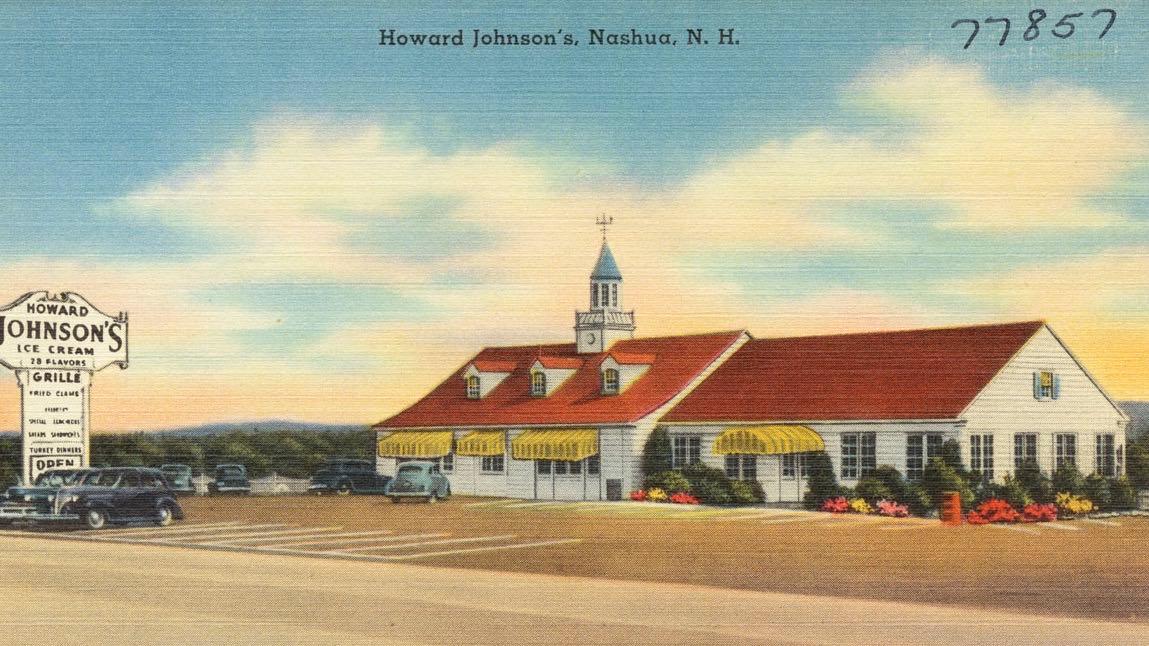America’s restaurants have evolved with American culture
This is a postcard of a Howard Johnson’s in Nashua, New Hampshire.
2015 was the first year that Americans spent more money on bars and restaurants than on groceries. And with attention-grabbing chefs and buzzy new places to eat, it feels like restaurants have never been more central to American life.
But how did we get here? Paul Freedman, Yale historian and author of the book, "Ten Restaurants That Changed America," charts restaurants’ course from Delmonico’s to Chez Panisse to Howard Johnson’s.
Freedman says restaurants reflect American society. Delmonico’s, the first American restaurant that we would recognize as a “fine-dining” establishment, coincided with the rise of railroads, industrialization and an American aristocracy not based on nobility, but on money. And restaurants like Delmonico’s reflected the particular mores of American society, as well. In the 19th century, for example, women were allowed into restaurants only in the presence of men.
“The problem was if women showed up alone, or in the company of other women,” Freedman says. “The perceived problem was distinguishing 'respectable' women from "unrespectable" women. Men could go alone and could go with either respectable women or not respectable women.”
As American attitudes changed, so did American restaurants. In the early 1900s, there was a restaurant that catered specifically to (what they presumed were) women’s tastes. It was a candy company turned upscale diner-style restaurant called Schrafft’s, and it attracted its audience with dainty meals and decadent desserts.
Restaurants also took advantage of changes in American life, like car culture. McDonald’s might be more well-known, but Freedman believes that Howard Johnson’s (now known mostly as a hotel chain) was the first restaurant that truly took advantage of America’s highways. They weren’t the first to put their restaurants alongside highways, but “most of those were unpleasant, truck-stop hash-house kind of places,” Freedman says. “They didn’t feel like they had to offer you good food because you weren’t going to be coming back, anyway. Howard Johnson’s developed a wholesome, predictable, family-friendly image. All of which we kind of take for granted but actually had to be invented.”
And on the other end of the foodie spectrum from Howard Johnson’s, there were restaurants that changed American tastes. Freedman points to Berkeley’s Chez Panisse as the place that started today’s emphasis on fresh, local, and seasonal food. Freedman claims American consumers were once more concerned with variety than quality, but after Alice Waters — the founder of Chez Panisse — emerged on the scene, that began to flip.
So, 2015 might have been the first year that Americans spent more money eating out than eating at home, but restaurants have been part of America’s fabric, shaping it and being shaped by it, for a long time.
This story originally aired on Innovation Hub.
